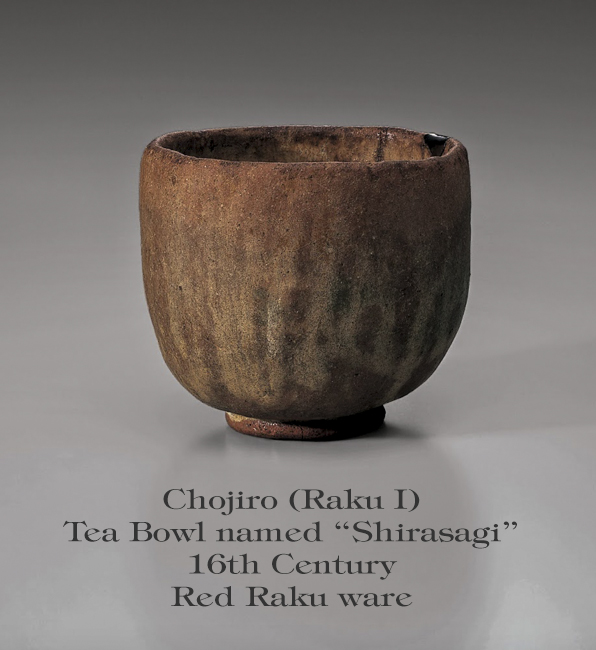
| Entry Page | About this Website | Ray Rasmussen's Homepage | Next Page -> |
Wabichado – The Way of the Tea Sen no Rikyu is widely credited with establishing the quiet, simple tea ceremony that today is most commonly practiced throughout the world. In the sixteenth century – the beginning of an age of peace following several long centuries of civil war in Japan – gaudiness was all the rage, and Rikyu's tea became an oasis of quiet, simple taste and the meditation that comes through making and savouring the tea. He created tiny tea huts based on the traditional farmer's hut of rough mud walls, a thatched roof, and organically shaped exposed wood structural elements. The hut included a nijiriguchi, a low entryway that forced guests to bow and experience humility as they entered. He served tea in cups made by anonymous Korean potters and indigenous Japanese craftsmen, the most famous of which are the Raku family's style. The teacups typically had cracks and flaws, and rough textures so that using them was both a textural and visual sensory treat. Rikyu made some of his own utensils of unlacquered bamboo, and he arranged flowers simply and naturally in bamboo vases (shakuhachi) and baskets. All of these elements together played to the 5 senses, and the simplicity of the setting to the aesthetic of wabi-sabi. Rikyu 's ceremony became known as wabichado (chado means "the way of tea"). It endures in Japan to this day and has spread elsewhere. Notes: information from Wikipedia. |
Image by Masayuki Miyahara/ teacup in the Urasenke Foundation Collection |
